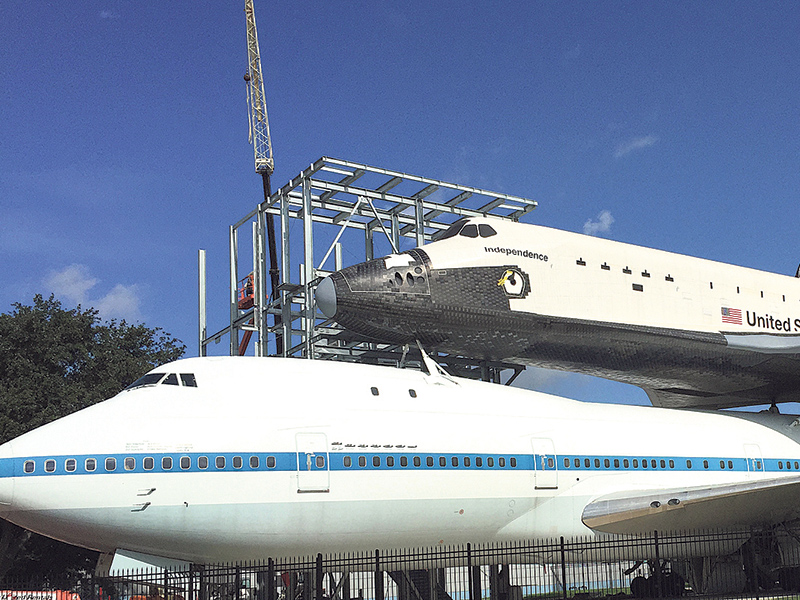For most people around during the 1960s, the space race between the United States and the Soviet Union captivated their imagination like a science fiction novel. Seeing fiction turn into reality amazed young and old alike. Hearing Apollo 11 astronaut Buzz Aldrin report from the moon that “The Eagle has landed” sent crowds cheering through streets worldwide.
On the American side, NASA developed its space program at the Manned Spaceflight Center in Houston, Texas. Built near prestigious Rice University, the country’s best scientists and engineers directed the fledgling space program and fulfilled president John F. Kennedy’s 1961 goal of putting a man on the moon by the end of that decade. Renamed Johnson Space Center (JSC) in 1972, NASA’s expansive campus along the shores of Galveston Bay remains one of Houston’s top attractions today.
READ: ALONG THE PACIFIC COAST HIGHWAY
Employing more than 3,000 people, the facility looks more like a university campus than a major government installation. Backpack-wearing scientists in plaid shirts, biking from building to building, appear more common than those in suits and ties.
The impressive sight of the Space Shuttle Independence perched on the back of a modified Boeing 747, greets visitors as they walk into the main exhibition hall. Inside, numerous exhibits chronicle the history of American space flight and its future plans for exploration of Mars. From the original Apollo lunar landing capsule to space simulator rides for kids, the visitor centre has an impressive array of options for visitors of all ages.
Two tours of the grounds are included with admission. One tour explores the sprawling JSC grounds, with a stop at the original 1966 Saturn V rocket. The other takes visitors to historic mission control, used during the heyday of the space program. Both tours stop at the memorial tree grove planted in memory of astronauts who perished in flight. A tree stands in the grove in memory of Israeli astronaut Ilan Ramon who died in the 2003 Space Shuttle Columbia disaster.
With its proximity to the Gulf of Mexico and to Texas oil fields, Houston has also long been associated with the energy industry. Generations of wealthy Houston families built their empires in the oil business. A major railroad and shipping hub for products imported and exported via the Gulf of Mexico, Houston grew quickly with the advent of air conditioning during the mid-20th century. Urban sprawl and explosive population growth led to the construction of a vast network of roads and highways rivalling cities such as Los Angeles.
But with the fluctuation in the price of oil and the world push to alternative fuel sources, this city of nearly 2.5 million diversified its economy and established itself as a centre of aerospace research, medicine and transportation.
For thousands of visitors every year, Houston has other impressive attractions. Hermann Park, adjacent to Rice University, is a tranquil eco-friendly public space that’s home to several world-class museums. The Houston Zoo, Japanese botanical gardens and the monument to city namesake Sam Houston entice visitors primarily during the cooler months.
A short drive from downtown is a museum like no other. The National Museum of Funeral History sits in a nondescript residential neighbourhood. The museum, which boasts on its website that it has “the country’s largest collection of funeral service artifacts,” is a must see when visiting Houston. Its assortment of hearses, coffins and other funeral related items on display are complemented by permanent exhibits on the history of embalming, death and mourning practices around the world, and U.S. presidential funerals. The museum’s motto proudly declares, “any day above ground is a good one.”
READ: SAN JUAN ISLAND –THE LAST PLACE YOU’D EXPECT TO SEE A HOLOCAUST MEMORIAL
Houston’s gulf coast location makes it subject to hot, humid summers, and violent weather can occur any month of the year. But nearby gulf coast communities make for a pleasant getaway even in the summer months.
Galveston Island, about an hour south of Houston, was the area’s shipping and trade centre during the latter 19th century. Known for a time as the “Wall Street of the South” and regarded as an ocean playground for the wealthy, Galveston suffered a direct hit from a hurricane in 1900 from which the city never fully recovered. Many of the extravagant Victorian-era homes were rebuilt and can be visited today. The relaxed seaside atmosphere and numerous attractions make for an idyllic getaway when in the area.
The Hollywood movie Apollo 13 made the line “Houston, we have a problem,” famous again to a new generation unfamiliar with the original Apollo 13 mission. With world-class attractions, entertainment, and a multicultural populace, including a steadily growing Jewish community, it’s clear that Houston has no problem.
Michael Stavsky acknowledges the assistance of the Houston Convention and Visitor’s Bureau in arranging his trip.
